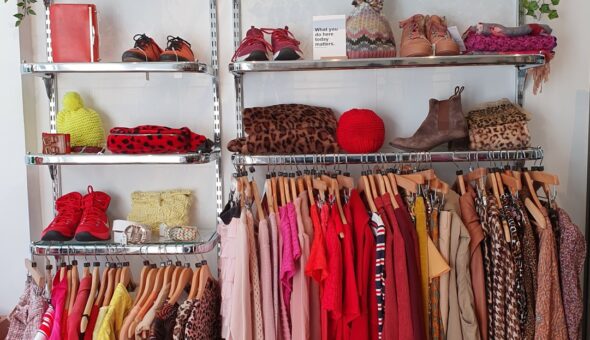With more and more consumers buying their everyday products online, can small retailers like independent grocery stores survive? Jens Nordfalt takes a closer look at the app Snappy Shopper, asking how it can help small stores survive the digitalisation of retail. Jens is the Academic Director of the Retailing and Contemporary Consumerism Lab at Bath’s School of Management.
Consumer behaviour has changed significantly in recent years – the gradual digitalisation of society, accelerated by covid restrictions, means that shoppers are increasingly buying products from the comfort of their homes.
Before lockdown it was mainly products like books and clothes that sold well online. But since the start of the pandemic, people are increasingly buying groceries online. Most large grocery chains have developed their own solutions to capitalise on this trend, however many smaller stores are suffering from this shift in customer behaviour. Only the big chains have the resources to invest in e-commerce, so small shops can’t respond to this customer need and get squeezed out. On top of this, research has shown that when shoppers buy online, purchases are concentrated to fewer stores and fewer brands. All of this could spell disaster for smaller retailers. This is where apps like ‘Snappy Shopper’ come in.
Identifying ‘pain points’
To understand how an app like Snappy Shopper can help small retailers, we first need to understand the role that apps play in retail, and the problems they solve. In large part, this can be viewed through the lens of ‘digital disruption’. Companies using this approach start by looking at the consumer’s ‘supply chain’ – that is, the steps a consumer must take to get the products and services they want.
In the case of grocery shopping, the supply chain starts with the consumer at home who needs to prepare a meal or to fill the pantry with something to use later. The next step for the shopper is to decide what to get, then to go to the store and pick it up, and finally to transport the products to the home.
After the digital disruptor has mapped out a customer supply chain in this way, the company will look for ‘pain points’. A pain point is a step in the supply chain that adds little or no quality to the shopper’s experience but is necessary for the task to be completed. Several steps in the grocery shopping supply chain can be considered ‘pain points’ for many customers. Travelling to and from the store, picking up goods from shelves and carrying them around the shop can be problematic for consumers with mobility issues, or even just customers who are short of time.
Digital disruptors create their businesses based on liberating the customer from these pain points. You probably recognize this pattern from well-known brands like Deliveroo, Uber Eats, and more.
Enter Snappy Shopper
So how does this help the small retailer? Obviously, one can’t expect consumers to download a new app for every type of item they want to buy. Someone who frequently buys from Tesco, Morrison’s, Sainsbury’s etc may well download an app from that chain but as mentioned, the fight for market shares is even more fierce online than offline. As such, this approach would only be worthwhile for large, well known brands – the limited market share held by small retailers, not to mention the cost of developing an app, would make this option unworkable.
However, if several small retailers utilise the same app, they can overcome both these inefficiencies and start benefitting from being a digital disruptor. Snappy Shopper allows the consumer to order deliveries from small, local convenience stores. Unlike buying from a large retailer, and waiting potentially several days to get your order, Snappy Shopper can get your order to your door within 30 minutes. In this way, it’s cornering a different part of the market to major retailers – helping customers who maybe need that urgent loaf or bread or pint of milk, rather than a large weekly shop – with the smaller grocery stores benefitting from this USP.
Levelling the playing field
While this app might help small retailers enter the digital sphere, it isn’t a perfect solution. One remaining question to be answered, is who will pay for the picking and delivery service? Some of the retailers on the app charge 3 pounds for a delivery – but since it costs £4-5 for someone to pick these items off the shelves, that must mean that the stores are covering some of the costs themselves. If this is the case, it may well prove expensive to fight for market shares in this way.
Only time will tell if apps like Snappy Shopper will be a success or not, and more importantly will their success help the countless other small retailers. The one thing we know for sure is that apps like Snappy Shopper help level the playing field between smaller and larger retailers, now that home delivery can be an option for all.
Responses




Thank you Jens, for highlighting how our technology and business model can empower local stores to compete effectively in a multi-channel grocery market.
You highlight the cost of processing orders which you suggest may not be covered by a £3 delivery charge. We have modelled the financial impact of the service and believe that it is more than viable for small convenience store owners and we now have over 900 local partners operating on the platform.
Moreover, with Snappy Shopper, local retailers can maintain their in-store pricing and feature special offers which they struggle to do with the large take-away aggregators who levy a much more substantial commission.
We won't mention the dark store operators, currently mostly concentrated in London, who aim to completely bypass local stores by running faceless warehouse-like operations which, in time, could jeopardise local neighbourhoods and communities by "sucking the life" out of local stores.
Our best wishes to the University of Bath and its students!
The team at Snappy Shopper